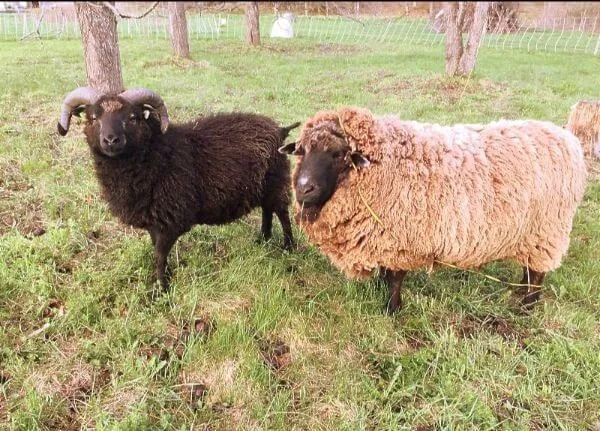Sometimes an agricultural project comes along that seems to check all the right boxes. The Vermont Wool Pellet Project, which the Center's Kimberly Hagen and Suzy Hodgson have been working on since 2016, looks like one of those.
1. Is it good for Vermont livestock farms?
2. Does it support farmer livelihood?
3. Does it support environmental sustainability?
4. Does it help preserve Vermont's working landscape?
5. Are research results promising?
6. Does it center around a marketable product?
7. Is it a story that excites people when they hear it?
With all of those answers looking like yes, and with the research entering its third stage, we wanted to share an update and to let folks know that we're looking for partners to help us continue.
How We Got to Wool Pellets
The vision started many years ago for Kimberly, herself a small-scale sheep farmer. She observed that it is hard for small operators to become profitable raising sheep for dairy or for meat. And that the wool produced by those breeds of sheep was seldom of a quality to use for yarn or other "fine" uses - but still had to be sheared from the sheep at a cost to the farmer. The wool was essentially a waste product that ended up stored in barns or dumped in the woods.
With input from farmers and community members in a variety of fields, the funding and support of USDA Rural Development and the Vermont Agency of Agriculture, Food and Markets, and the enthusiastic interest of vegetable farmers and colleagues both inside and outside UVM, Kimberly and Suzy began to investigate a marketable use for this natural fiber.
Many conversations and meetings and analyses later, one thing was especially clear: the best way to use wool would be one that didn't require farmers to scour (clean) the wool first, as that step is the one that not only adds too much time and labor, but also can contribute excess nutrients into the state's bodies of waters.
The team became aware of a pelletized wool product being made in the western US and in Europe, one that uses raw wool and is sold as a soil amendment for farmers and gardeners. In 2019 they conducted trials of the pellets on three Vermont vegetable farms to learn what happened to broccoli plants when the pellets were applied as a treatment. Results were exciting, showing that wool pellets performed as well or better than the standard (imported) peanut meal treatment (most dramatically on one trial pictured below).
And maybe even more exciting has been how enthusiastic folks are about the prospect of being able to develop a local product from a waste material, one that is going to help farmers become or stay profitable, and looks like it will be beneficial for home gardeners, vegetable growers, and all who value clean water and healthy soil as well.
What now?
As we look to the 2020 growing season, our priority is to secure funding for the next two phases of research:
· Conduct in-depth longer trials on a single farm before planning for a larger field trial with multiple growers.
· Test of at-scale production of pelletized wool in order to determine actual cost of production and practical viability.
If you are interested in learning more about the project or lending support, please let us know. Contact Kimberly Hagen for details on the research, or Cheryl Herrick to make a gift to support the work.
This story originally appeared in the Center's March 2020 Fresh from the Field newsletter.
